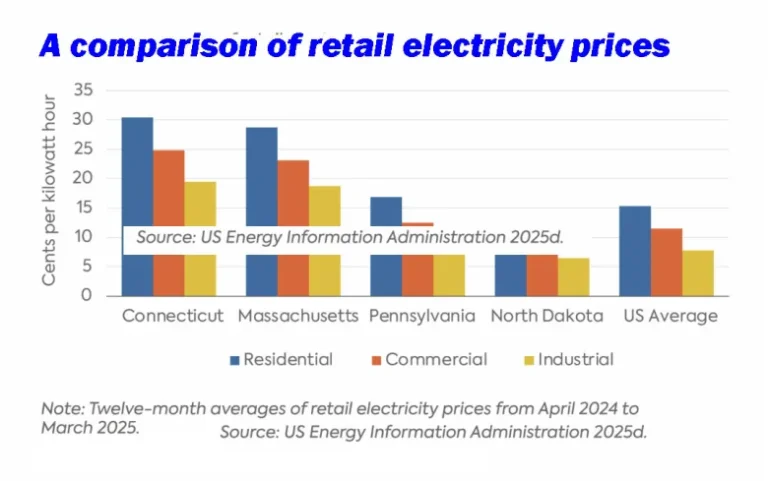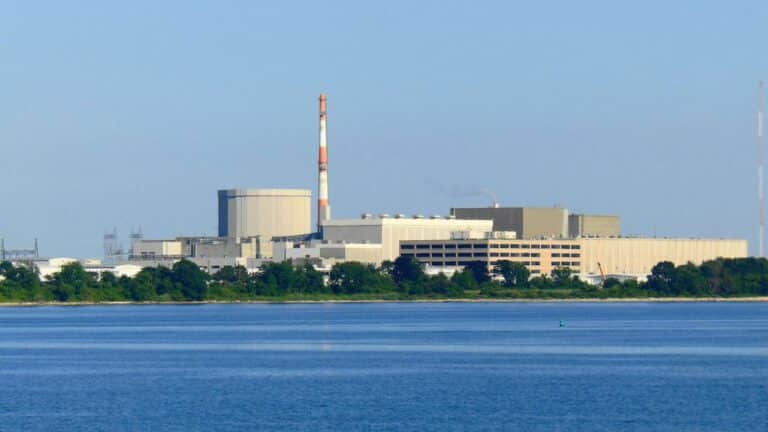‘Toothless’ sanctions
Why the world’s largest waste management company made a $3 billion bet on the US.
Current Access Level “I” – ID Only: CUID holders, alumni, and approved guests only
Op-eds & Essays by Jason Bordoff • April 21, 2020
For wonks like me, figuring out how to reduce greenhouse gas emissions involves studying a byzantine set of regulations, incentives, taxes, and subsidies—and myriad technological eureka moments to fundamentally reshape every nook and cranny of how we power our economy. Yet as we commemorate the 50th annual Earth Day this week, the most important lesson of the environmental movement’s success over the past half-century is that none of this is possible without an underlying social movement and cultural awakening to the urgency of climate change that, sadly, still eludes us.
On April 22, 1970, one of out every 10 Americans came together for a series of rallies, speeches, and teach-ins to tell their leaders they were no longer willing to put up with toxic air and poisoned water. Since then, the event has been held each year in many countries around the world.
Most Americans today take clean air and water for granted, with important exceptions such as the residents of Flint, Michigan. Yet it was not always so. In 1970, after two decades of soaring automobile use and unregulated industrial growth, a thick carpet of smog blanketed cities. Huge fish kills were common in stinking lakes and rivers marked by signs warning they were too dangerous for swimming. Dangerous pesticides such as DDT, about which the author Rachel Carson warned in her famous book, Silent Spring, polluted rivers and made their way up the food chain to kill bald eagles.
In 1969, two events catalyzed Americans into coming out en masse to declare that they could no longer live this way. In January, an oil spill off the coast of Santa Barbara damaged California’s coastline, highlighting the lack of federal regulation of offshore drilling at the time. In June, the Cuyahoga River in Cleveland caught fire when oil and chemicals on its surface ignited. While it was not the first fire on that river or others near industrial sites, the dramatic photos in Time magazine sparked national outrage.
The 20 million Americans who came together the following year for the first Earth Day were from all walks of life—urban, suburban, and rural; young and old; Republican and Democrat. Environmental protection was not the politically polarizing issue it is today. Indeed, President Richard Nixon focused his 1970 State of the Union address on the environment, created the Environmental Protection Agency (EPA), and signed the United States’ landmark environmental statutes—the Clean Water Act, Clean Air Act, Endangered Species Act, and National Environmental Policy Act. Far from being a tree-hugger, Nixon was compelled to act by “the political significance of the environmental issue,” according to the chairman of Nixon’s own Task Force on Environmental Policy.
The 50th anniversary of Earth Day is an occasion to celebrate the great successes of these laws. Since 1970, emissions of the six most common pollutants have dropped by more than 70 percent in the United States, preventing hundreds of thousands of premature deaths.Since 1970, emissions of the six most common pollutants have dropped by more than 70 percent in the United States, preventing hundreds of thousands of deaths. The Clean Water Act has dramatically reduced the amount of toxins discharged into lakes, rivers, and coastal waters—two-thirds of which were unsafe for swimming or fishing when the act was signed in 1972. EPA policies have removed the acid from rain, taken the lead out of gasoline that was causing millions of children to develop cognitive problems and other effects of lead poisoning, and cleaned up thousands of contaminated sites through its Superfund program.
Today, the EPA is often decried as “job-killing” and has been hollowed out by the Trump administration. The agency may be a victim of its own success, as many Americans have forgotten just how dramatic the improvements in their air and water quality have been since the EPA’s creation—even as GDP, consumption, and the standard of living have continued to soar.
The environmental movement’s success in the last half-century, however, offers some sobering lessons for how to solve today’s environmental challenge of climate change.
First, what motivated Americans to come together 50 years ago was widespread and visible ecological damage already suffered, yet climate change demands a preemptive response. After the EPA implemented environmental protection rules and programs like Superfund to clean up hazardous waste sites, the air and waterways began to clear up in the years that followed. Today, the Cuyahoga River is full of rowers and paddlers, and the fish are safe to eat. Climate change, however, results from the total stock of greenhouse gases such as carbon dioxide in the atmosphere. Once emitted, CO2 persists for centuries or longer. Some CO2 can be removed, although today that cost is still high. If we wait until the climate damage is done to mobilize and begin decarbonizing, it might be too late.
Second, climate change is more challenging to solve because it is a global problem. Every ton of greenhouse gas contributes equally to climate change regardless of where it is emitted, posing wicked collective-action and free-rider challenges. If one nation decarbonizes but no one else does, it will make little difference, but if everyone else does, any individual nation can reap those benefits even if it takes no action itself. That is why climate change demands not only aggressive domestic policies, as were enacted after the first Earth Day, but also global cooperation and diplomacy. Unfortunately, populism, protectionism, and unilateralism are on the rise, with the United States among the worst offenders under President Donald Trump.
Finally, and most importantly, reflections on this historic Earth Day teach us that action on climate change will not be possible until a cultural groundswell demands it. As Sen. Daniel Patrick Moynihan famously said, “The central conservative truth is that it is culture, not politics, that determines the success of a society. The central liberal truth is that politics can change a culture and save it from itself.”
Curbing carbon emissions requires policies to change economic incentives and drive the necessary systemic shifts in how millions of firms and individuals produce and consume energy for all cars and trucks, factories and industrial plants, homes and businesses, and more. City and state leadership is welcome but insufficient, as are voluntary actions to carpool, use public transport, fly less, or otherwise go green. Yet political action remains elusive, and even those policies that may be possible if the landscape in Washington shifts would still fall far short of the needed scope and scale.
Changing what is politically possible requires the sort of mobilization seen on the first Earth Day. Today, a cultural awakening about the urgency of climate change is percolating—as students take to the streets in school strikes, major corporations pledge action, and some cities and states lead the way—but we’re not there yet. The public’s concern about climate change still falls far short of the urgency that mobilized 20 million people to rally 50 years ago.
Perhaps that is because unlike air and water quality, climate change does not affect daily life in the same way as the seminal moments of the environmental movement. Love Canal, for example, became a symbol of the hazards of toxic waste in the late 1970s, when a community near Niagara Falls became concerned that they were suffering miscarriages and their children were sick from the effects of chemicals dumped in the unfinished waterway decades earlier.
The impacts of climate change are less direct and tangible. They will also affect future generations more than today’s. And they will cause greater suffering in poor nations than in the United States. Unlike the pollution of the 1970s, therefore, elevating society’s sense of urgency on climate change requires an ethical awakening, not just greater awareness of how it worsens the droughts, storms, floods, heatwaves, and wildfires that harm Americans today.
The 50th anniversary of Earth Day is an occasion to take stock and celebrate the dramatic progress in cleaning the United States’ lakes, rivers, land, and air. It is also a moment to remember that this could not have happened without a robust role for the federal government and without strong regulation, which turned out to be far less costly than opponents feared. It also provides a cautionary lesson, however, that policy is insufficient. Social movements are necessary. Sadly, the COVID-19 pandemic precludes the sort of in-person, mass mobilization of the first Earth Day. Yet even if it did not, the lack of a broad-based cultural awareness of the urgency of climate change would stymie such mobilization. The lesson of that first Earth Day is that climate solutions will remain out of reach until that changes.
Connecticut needs an honest debate, and fresh thinking, to shape a climate strategy fit for today, not 2022.


As diplomats meet in Brazil for COP30, global resolve to tackle the climate challenge appears badly frayed.

Full report
Op-eds & Essays by Jason Bordoff • April 21, 2020